
The Enchanting Lisbon Coast: Portugal's Coastal Gem
Discover the Lisbon Coast: From historic Lisbon to charming coastal towns, experience Portugal's perfect blend of culture, nature, and relaxation.
The Lisbon Coast is a stunning stretch of coastline that offers something for every type of traveler. With its golden beaches, charming villages, and vibrant city life, this destination is perfect for those looking to relax or explore. The coast is dotted with historical sites, lush landscapes, and culinary delights that make it a must-visit. Begin your adventure in the heart of Lisbon, Portugal's capital, where you can wander through narrow streets filled with colorful tiles and historic architecture. Don't miss the iconic Belém Tower, a UNESCO World Heritage site that offers breathtaking views of the Tagus River. The city's vibrant nightlife, bustling markets, and mouth-watering cuisine will keep you entertained and satisfied. Venturing out of Lisbon, head towards the picturesque town of Cascais. Known for its beautiful beaches and elegant marina, Cascais is a haven for sun-lovers and water sports enthusiasts. The nearby Sintra-Cascais Natural Park offers hiking trails that lead to dramatic cliffs and panoramic ocean views. For a touch of luxury, visit the Estoril Casino, one of Europe's oldest and grandest casinos. Further along the coast, you'll find the charming village of Ericeira, famous for its surfing spots and laid-back atmosphere. This coastal gem is ideal for those looking to catch some waves or simply unwind. Sample fresh seafood at local restaurants and enjoy the vibrant cultural scene that includes music festivals and artisan markets. Whether you are seeking adventure, relaxation, or a bit of both, the Lisbon Coast has it all. The blend of natural beauty, cultural richness, and modern amenities makes it a destination you won't soon forget.
Local tips in Lisbon Coast
- Plan your visit during spring or fall for the best weather and fewer crowds.
- Use public transportation or rent a bike to explore Lisbon's narrow streets and coastal paths.
- Try the local pastries, especially the famous Pastel de Nata, at any of the traditional bakeries.
- Visit the local markets for fresh seafood and unique souvenirs.
- Bring comfortable walking shoes as many areas have cobblestone streets.
- Don't miss a sunset at Cabo da Roca, the westernmost point of mainland Europe.
The Enchanting Lisbon Coast: Portugal's Coastal Gem
The Lisbon Coast is a stunning stretch of coastline that offers something for every type of traveler. With its golden beaches, charming villages, and vibrant city life, this destination is perfect for those looking to relax or explore. The coast is dotted with historical sites, lush landscapes, and culinary delights that make it a must-visit. Begin your adventure in the heart of Lisbon, Portugal's capital, where you can wander through narrow streets filled with colorful tiles and historic architecture. Don't miss the iconic Belém Tower, a UNESCO World Heritage site that offers breathtaking views of the Tagus River. The city's vibrant nightlife, bustling markets, and mouth-watering cuisine will keep you entertained and satisfied. Venturing out of Lisbon, head towards the picturesque town of Cascais. Known for its beautiful beaches and elegant marina, Cascais is a haven for sun-lovers and water sports enthusiasts. The nearby Sintra-Cascais Natural Park offers hiking trails that lead to dramatic cliffs and panoramic ocean views. For a touch of luxury, visit the Estoril Casino, one of Europe's oldest and grandest casinos. Further along the coast, you'll find the charming village of Ericeira, famous for its surfing spots and laid-back atmosphere. This coastal gem is ideal for those looking to catch some waves or simply unwind. Sample fresh seafood at local restaurants and enjoy the vibrant cultural scene that includes music festivals and artisan markets. Whether you are seeking adventure, relaxation, or a bit of both, the Lisbon Coast has it all. The blend of natural beauty, cultural richness, and modern amenities makes it a destination you won't soon forget.
When is the best time to go to Lisbon Coast?
Iconic landmarks you can’t miss
Belém Tower
Explore Belém Tower in Lisbon, a UNESCO World Heritage Site and iconic symbol of Portugal's maritime legacy, offering stunning architecture and breathtaking views.
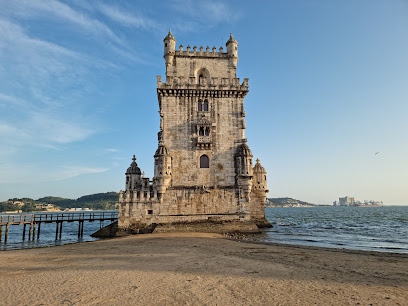
Padrão dos Descobrimentos
Discover the spirit of exploration at the Padrão dos Descobrimentos, a monumental tribute to Portugal's navigators and their historic voyages.
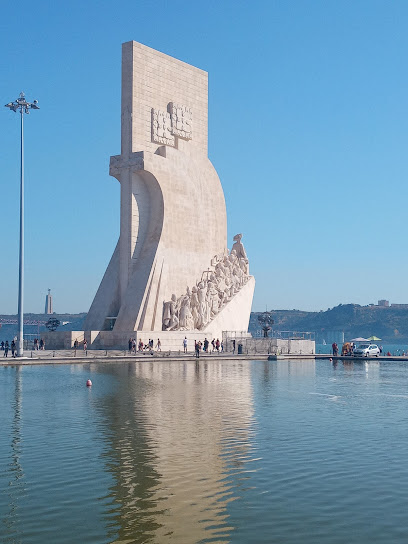
Miradouro de Santa Luzia
Discover stunning panoramic views and vibrant local culture at Miradouro de Santa Luzia, a must-visit scenic spot in Lisbon.
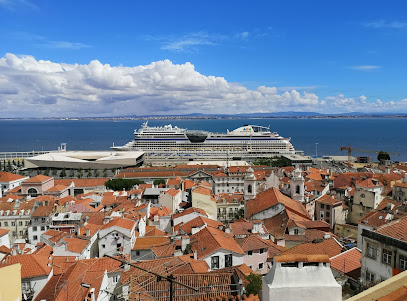
Carmo Convent
Discover the haunting beauty and rich history of Carmo Convent, an archaeological gem in the heart of Lisbon, Portugal.
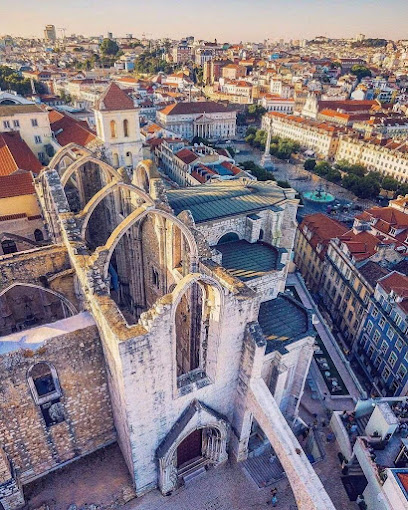
National Pantheon
Explore the National Pantheon in Lisbon, a historical landmark and final resting place for Portugal's renowned figures, offering stunning architecture and breathtaking views.
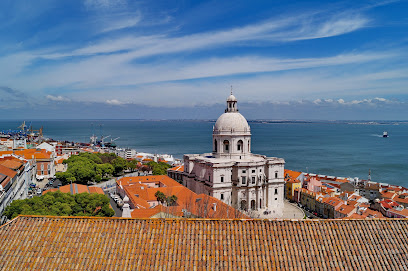
Monument Deads of Great War
Visit the Monument to the Fallen of the Great War in Lisbon, a striking tribute surrounded by beauty, history, and local culture.
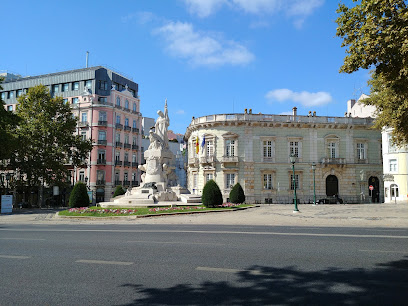
Monument to the Overseas Combatants
Explore the Monument to the Overseas Combatants, a stunning tribute to Portuguese bravery and sacrifice in Lisbon, rich with history and breathtaking views.
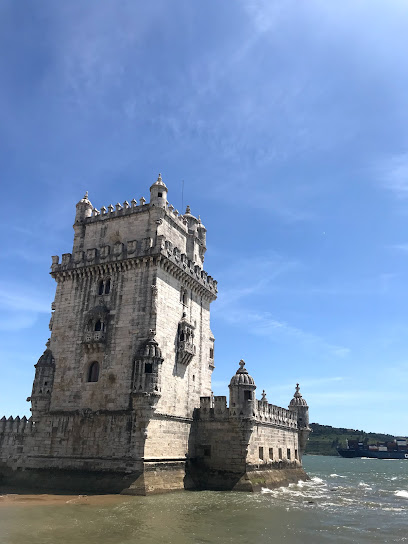
Fonte Sul do Rossio
Explore the stunning Fonte Sul do Rossio in Lisbon, a historic fountain surrounded by vibrant culture, cafes, and architectural beauty.
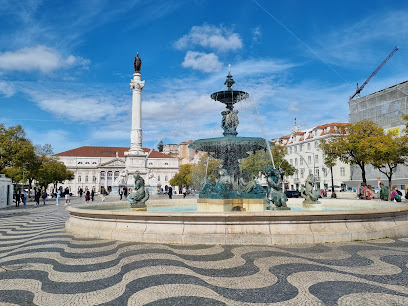
Fonte Norte do Rossio
Explore Fonte Norte do Rossio, a captivating Lisbon landmark where history and beauty converge amidst the vibrant atmosphere of the city.
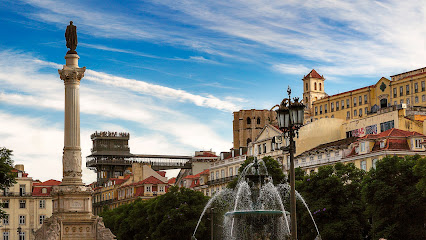
Arch São Bento
Discover the architectural beauty and historical significance of Arch São Bento, a stunning landmark in the heart of Lisbon.
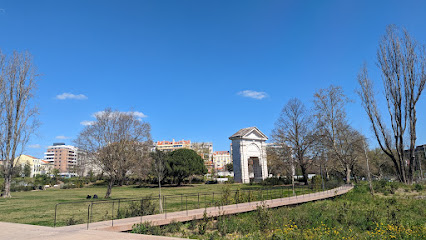
Chafariz do Largo do Mastro
Explore Chafariz do Largo do Mastro, a historic Lisbon fountain showcasing exquisite architecture and vibrant local culture amidst the city's charm.
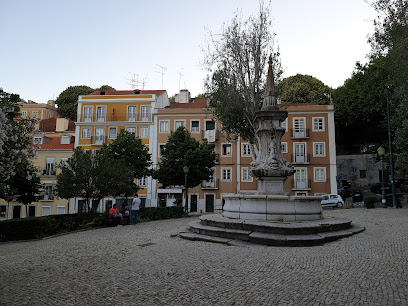
Túmulo Pedro de Sousa Holstein
Explore the historical essence of Túmulo Pedro de Sousa Holstein and discover the rich tapestry of Lisbon's past in this remarkable landmark.
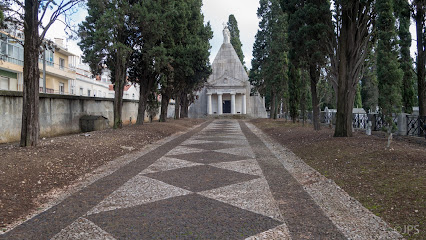
Mural for Pessoa and Saramago
Explore the vibrant Mural for Pessoa and Saramago in Lisbon, celebrating two of Portugal's greatest literary icons amidst the city's rich cultural heritage.
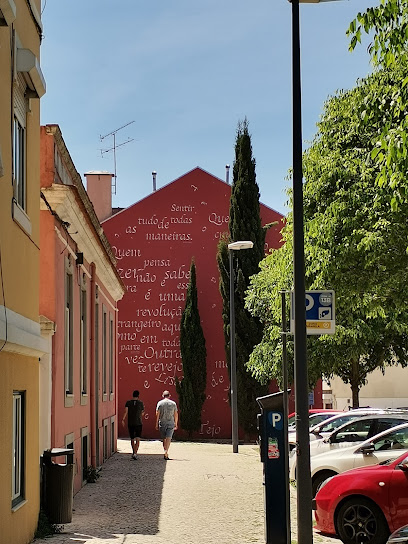
Oldest house in Lisbon
Discover the Oldest House in Lisbon, a historical landmark that encapsulates the rich heritage and architectural beauty of Portugal's capital.
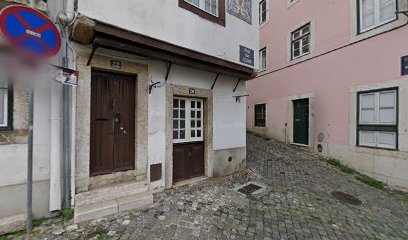
Primeira Pedra
Explore Primeira Pedra, a serene historical attraction in Lisbon, where captivating architecture meets breathtaking views amid the city's rich culture.
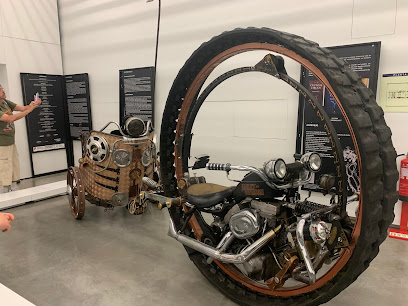
Unmissable attractions to see
Oceanário de Lisboa
Explore the incredible underwater world at Oceanário de Lisboa, one of the largest aquariums in the world, showcasing diverse marine life and promoting ocean conservation.

LX Factory
Explore LX Factory, Lisbon's creative hub filled with art, unique shops, and a diverse culinary scene, perfect for every traveler seeking inspiration.

Santa Justa Lift
Discover the Santa Justa Lift: An architectural gem in Lisbon offering breathtaking views and seamless connection between historic neighborhoods.
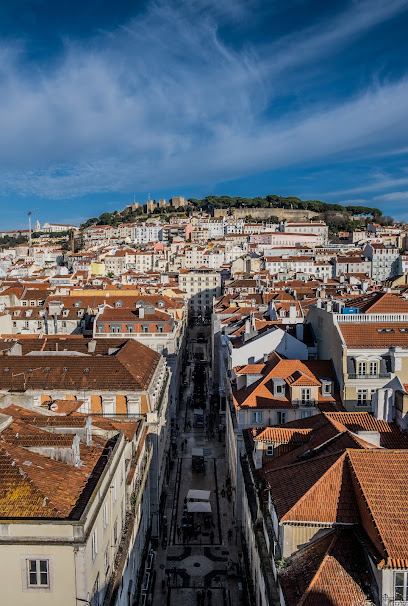
Parque Florestal de Monsanto
Explore the vast green expanse of Parque Florestal de Monsanto, Lisbon's ultimate nature retreat with trails, playgrounds, and breathtaking views.
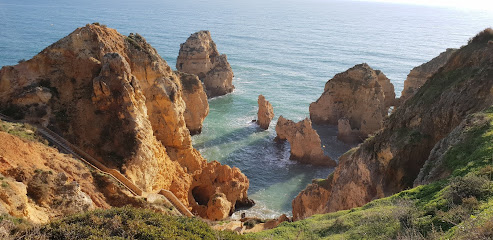
Feira Internacional de Lisboa
Experience the dynamic spirit of Lisbon at the Feira Internacional de Lisboa, a premier convention center featuring diverse cultural and business events.

Estufa Fria
Discover the enchanting Estufa Fria, a tranquil botanical garden in Lisbon's Parque Eduardo VII, bursting with exotic flora and serene landscapes.
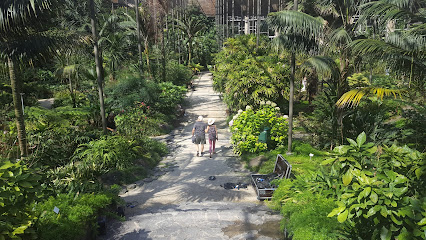
Parque dos Poetas
Explore Parque dos Poetas in Oeiras, a serene park blending nature and art, ideal for leisurely strolls, picnics, and cultural events.
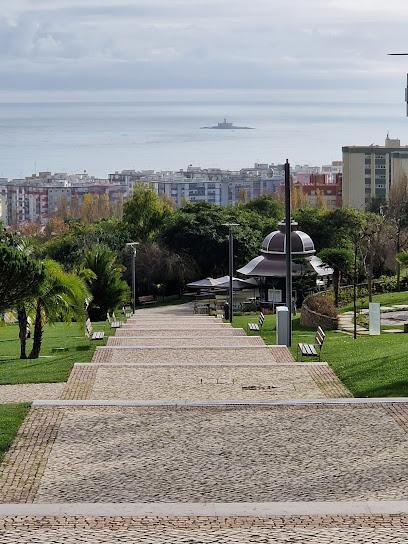
Botanical Garden of Lisbon
Discover the serene beauty of the Botanical Garden of Lisbon, a lush oasis filled with diverse plants and captivating sculptures in the heart of the city.
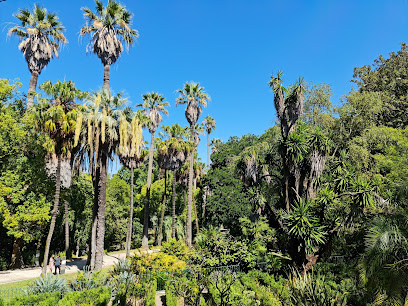
Vasco da Gama Tower Babylon 360
Experience breathtaking views and vibrant atmosphere at Vasco da Gama Tower, Lisbon's iconic landmark overlooking the Tagus River.

Jardim do Torel
Discover the serene beauty of Jardim do Torel, a lush garden oasis in Lisbon offering stunning city views and peaceful retreats.

Lisbon Earthquake 1755
Unearth the history of the 1755 Lisbon Earthquake in a museum that brings the past to life through captivating exhibits and stunning views.
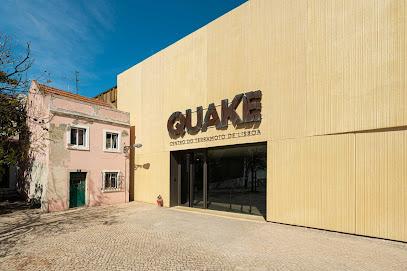
Tropical Botanical Garden
Explore Lisbon's Tropical Botanical Garden, a vibrant sanctuary of exotic plants and tranquil pathways, perfect for nature lovers and photographers alike.
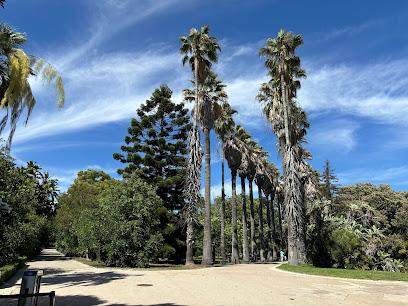
Cais das Colunas
Discover Cais das Colunas, a historic waterfront landmark in Lisbon, where stunning views and rich maritime heritage await.
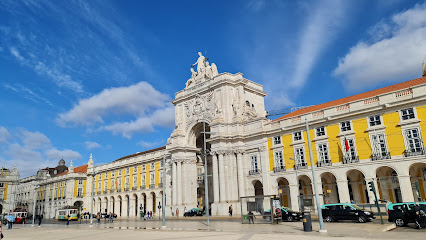
Telecabine Lisbon - North Station
Experience breathtaking views of Lisbon from the Telecabine, an iconic aerial cable car ride over the scenic Tagus River.
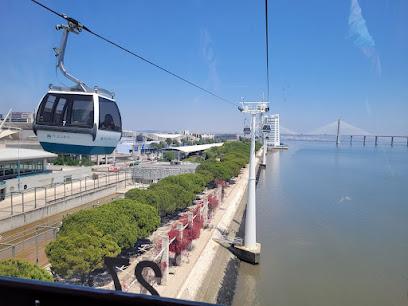
Garden of Afonso de Albuquerque
Discover tranquility at the Garden of Afonso de Albuquerque in Lisbon, a lush oasis perfect for relaxation, picnics, and picturesque strolls amidst vibrant greenery.
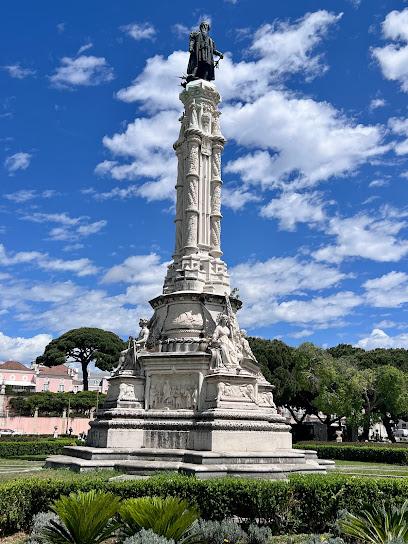
Essential places to dine
Cervejaria Ramiro
Discover Cervejaria Ramiro: Lisbon's premier seafood restaurant offering fresh catches in a vibrant atmosphere.
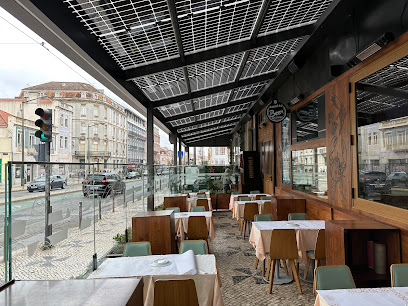
D'Bacalhau
Experience authentic Portuguese cuisine at D'Bacalhau in Lisbon, specializing in exquisite bacalhau dishes and local wines.
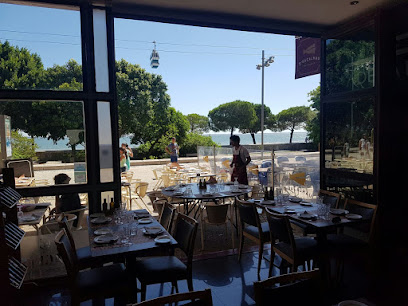
Restaurante Come Prima
Experience authentic Italian dining at Restaurante Come Prima in Lisbon, where every dish tells a story of flavor and tradition.
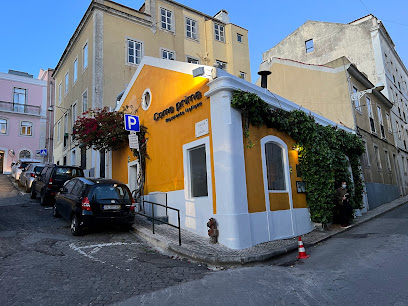
A Cevicheria
Experience authentic Peruvian cuisine at A Cevicheria, where fresh ceviche meets vibrant flavors in a lively atmosphere.
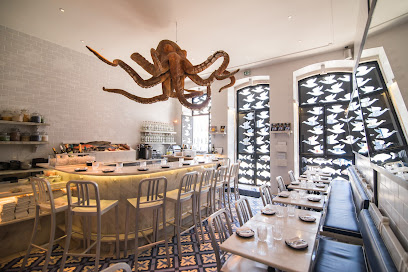
Chapitô à Mesa
Discover Chapitô à Mesa in Lisbon – where stunning views meet exquisite Portuguese cuisine for an unforgettable dining experience.
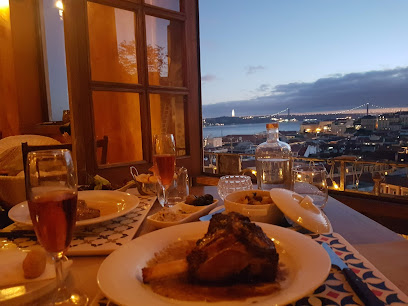
Palácio Chiado
Discover the essence of Portuguese cuisine at Palácio Chiado - where history meets culinary artistry in the heart of Lisbon.
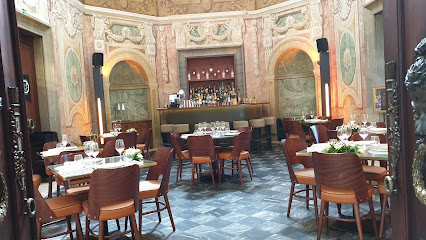
A Provinciana
Experience authentic Portuguese cuisine in the heart of Lisbon at A Provinciana – where tradition meets flavor.
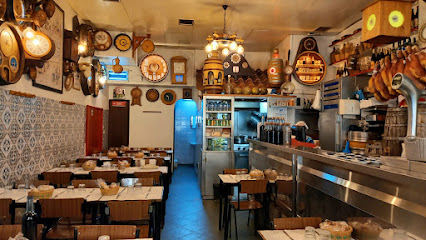
Taberna Sal Grosso
Discover the heart of Portuguese cuisine at Taberna Sal Grosso - a vibrant tavern experience in Lisbon.

Floresta das Escadinhas
Discover authentic Portuguese cuisine at Floresta das Escadinhas in Lisbon - where delightful flavors meet cozy ambiance.
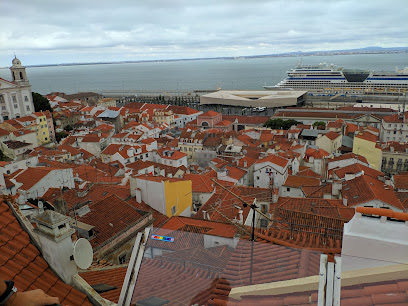
Augusto Lisboa
Experience the vibrant flavors of Lisbon at Augusto Lisboa – where brunch meets culinary artistry in a cozy atmosphere.
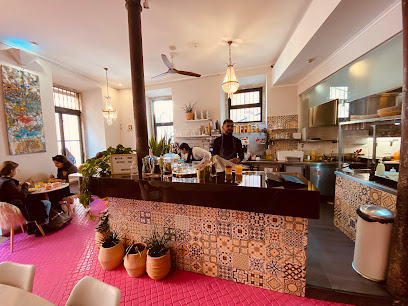
JNcQUOI Avenida
Experience the pinnacle of fine dining at JNcQUOI Avenida – where luxury meets culinary innovation in the heart of Lisbon.
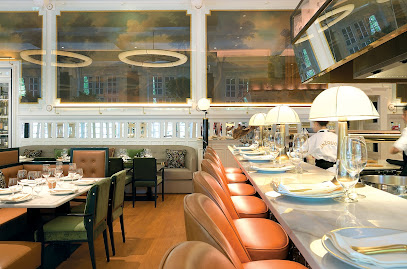
Frade dos Mares
Experience the best of Portuguese seafood at Frade dos Mares in Lisbon - where tradition meets flavor in every dish.
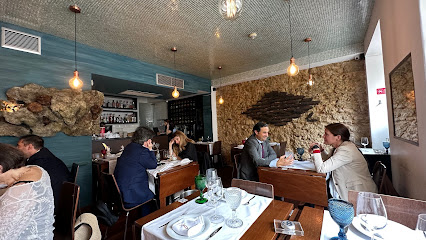
daPrata52 - Petiscos Tapas
Experience authentic Portuguese petiscos at daPrata52 - Petiscos Tapas in Lisbon's heart; indulge in vibrant flavors and local charm.
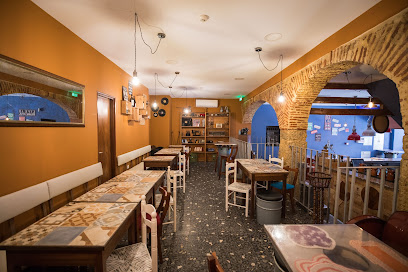
Cais na Preguiça
Experience the best of Lisbon's seafood at Cais na Preguiça – where fresh ingredients meet traditional flavors in a vibrant setting.
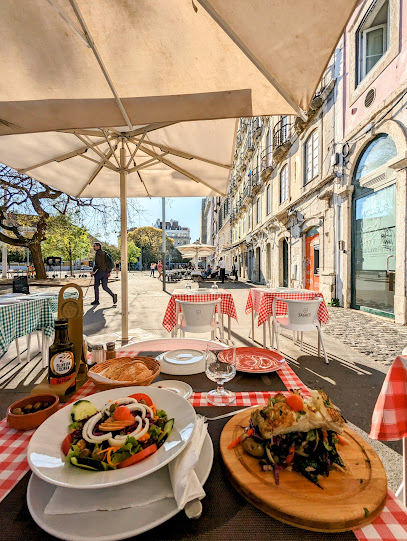
Sacramento do Chiado
Discover Sacramento do Chiado: A romantic restaurant in Lisbon offering traditional Portuguese cuisine and delightful seafood rice.
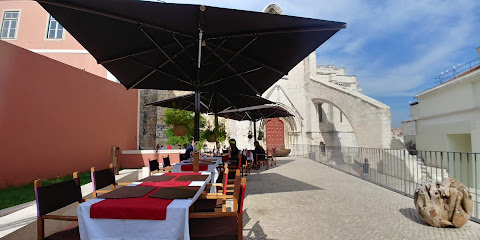
Markets, malls and hidden boutiques
A Vida Portuguesa
Discover the essence of Portuguese culture at A Vida Portuguesa, where traditional craftsmanship meets contemporary design in Lisbon's charming home goods store.
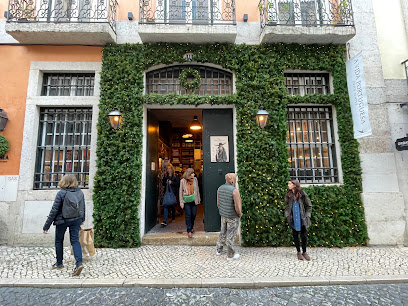
A Outra Face da Lua (Baixa)
Explore A Outra Face da Lua, Lisbon's charming vintage clothing store, for unique fashion treasures that capture the essence of timeless style.
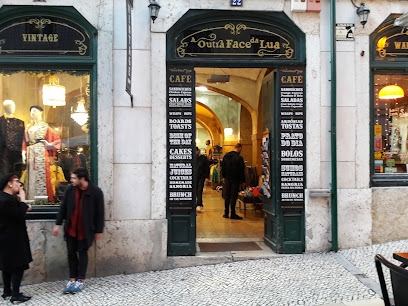
Bairro Arte
Discover Bairro Arte in Lisbon - a vibrant souvenir store showcasing local craftsmanship and unique design pieces that capture the spirit of Portugal.
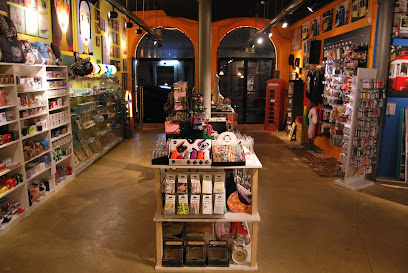
Portfolio - Made of Portugal
Explore a treasure trove of authentic Portuguese souvenirs at Portfolio - Made of Portugal in the heart of Lisbon, celebrating local craftsmanship.

Soma Ideas
Explore Soma Ideas in Lisbon for unique, handcrafted souvenirs and home goods that embody Portuguese culture and creativity.
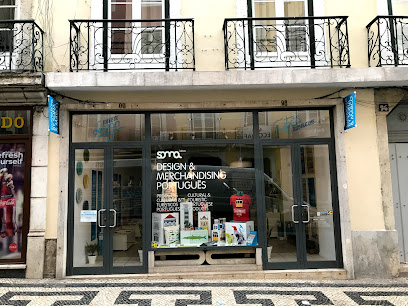
A Loja Azul
Discover A Loja Azul in Lisbon, where artistic handicrafts meet Portuguese tradition, perfect for unique souvenirs and local treasures.
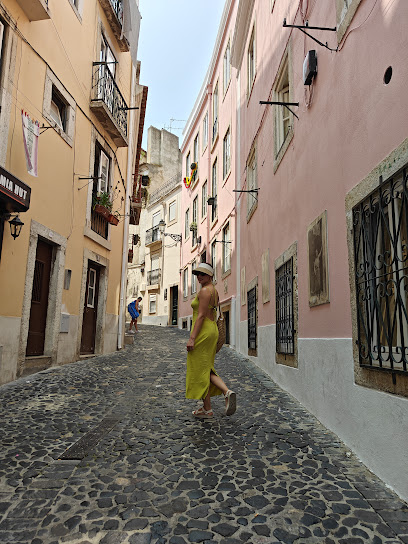
Real Slow Retail Concept Store
Explore the Real Slow Retail Concept Store in Lisbon: A haven for unique fashion and mindful shopping that embodies the local culture.
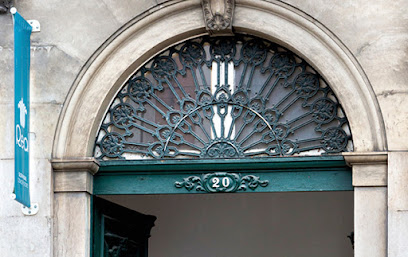
Lisbon Shop
Explore Lisbon Shop for an array of unique souvenirs that embody the charm and culture of Portugal's stunning capital.
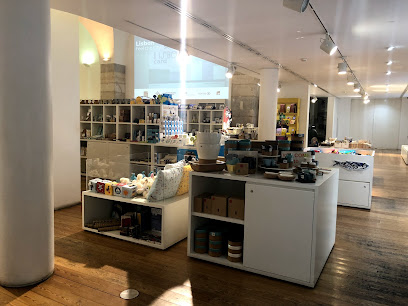
Souvenirs shop (부산아저씨 기념품가게)
Explore 부산아저씨 기념품가게 in Lisbon for authentic Portuguese souvenirs that beautifully capture the essence of your travels.

Souvenirs Shop Of Lisbon
Explore the Souvenirs Shop of Lisbon for a unique collection of gifts and local crafts that capture the spirit of Portugal's vibrant culture.
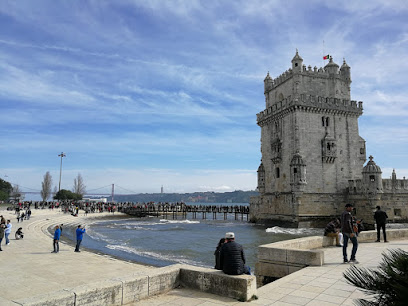
Lisbon Craft
Explore Lisbon Craft: Your destination for unique handmade goods and beauty supplies, reflecting the heart of Portuguese craftsmanship.
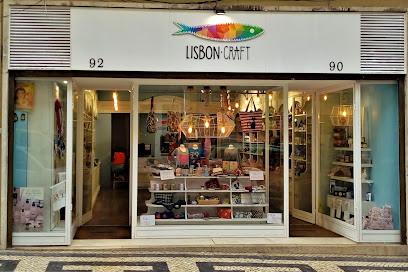
Loja Real
Discover unique fashion treasures at Loja Real, a charming clothing store in the heart of Lisbon's Praça do Príncipe Real.

Artesanato de Portugal
Discover the essence of Portugal through stunning handcrafted souvenirs at Artesanato de Portugal in Lisbon, where artistry meets tradition.
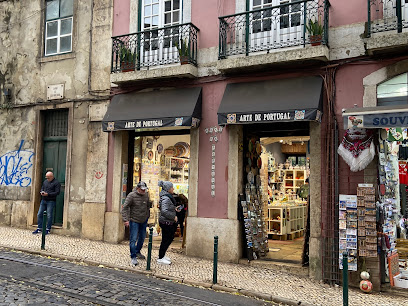
Souvenir de Lisboa
Explore authentic Portuguese souvenirs at Souvenir de Lisboa, where every item reflects the vibrant culture and heritage of Lisbon.
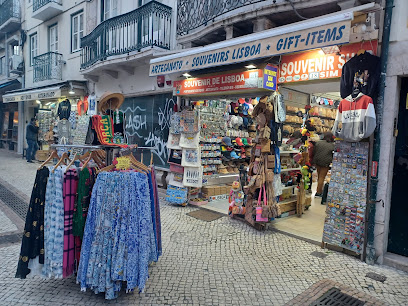
Bela Lua Design
Discover unique souvenirs at Bela Lua Design, a charming novelty store in Lisbon's Gare do Oriente, celebrating local craftsmanship and culture.
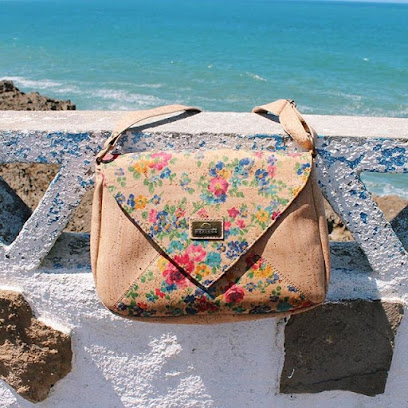
Essential bars & hidden hideouts
Pensão Amor
Discover the eclectic charm of Pensão Amor, a unique bar in Lisbon's vibrant nightlife scene, filled with history, art, and delightful drinks.
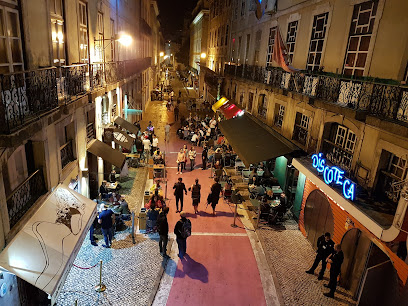
Foxtrot
Experience the vibrant nightlife of Lisbon at Foxtrot, a cocktail bar blending vintage charm with modern mixology.
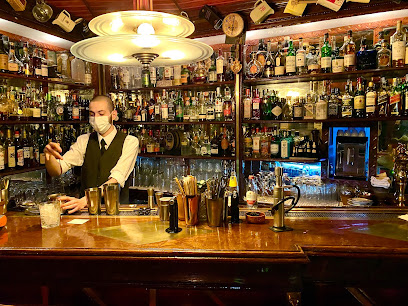
Sky Bar by Seen
Experience breathtaking views and exquisite cocktails at Sky Bar by Seen, Lisbon's premier rooftop bar for an unforgettable night out.
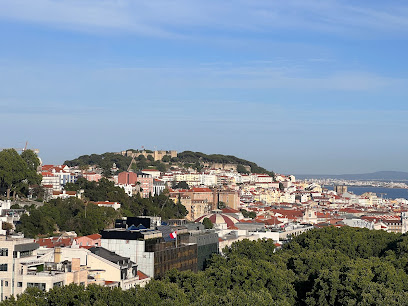
British Bar Lisboa
Discover the authentic taste of Britain at British Bar Lisboa, where hearty meals and a vibrant atmosphere await in the heart of Lisbon.
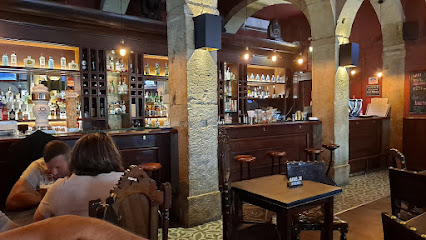
Red Frog Speakeasy
Discover the hidden gem of Red Frog Speakeasy in Lisbon, where exquisite cocktails and an enchanting atmosphere await every visitor.
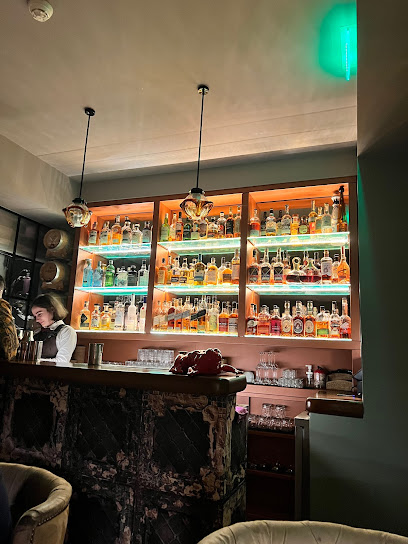
CINCO lounge
Discover CINCO Lounge, Lisbon's premier cocktail bar, where exquisite drinks meet an inviting atmosphere for an unforgettable night out.
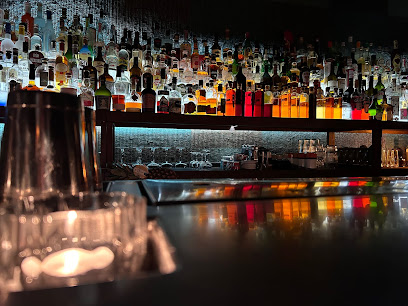
O Bom O Mau e O Vilão
Experience the vibrant nightlife of Lisbon at O Bom O Mau e O Vilão, where innovative cocktails and a lively atmosphere await.
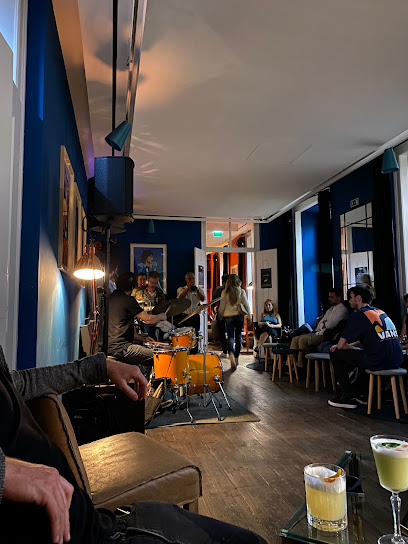
Rocket Bar
Experience the vibrant cocktail culture of Lisbon at Rocket Bar, where expertly crafted drinks meet a lively atmosphere.
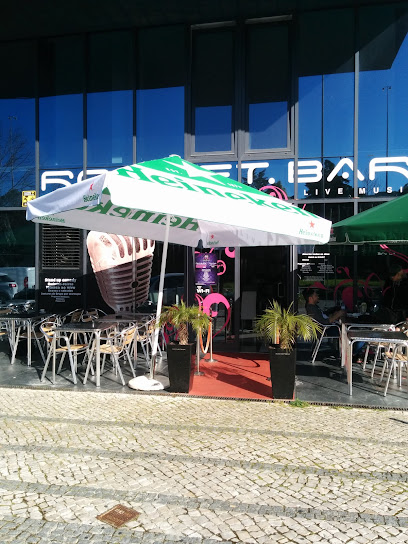
Lisboa Bar
Discover the heart of Lisbon's nightlife at Lisboa Bar, where vibrant ambiance meets exquisite local drinks for an unforgettable experience.
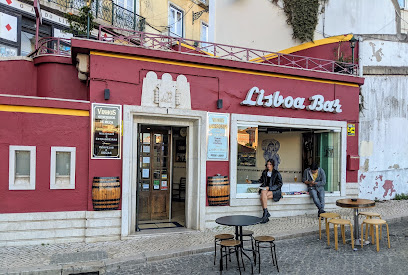
Toca da Raposa
Discover Toca da Raposa, a vibrant cocktail bar in Lisbon, renowned for its creative drinks and welcoming atmosphere, perfect for nighttime adventures.

Bar Old Vic
Experience the vibrant nightlife of Lisbon at Bar Old Vic, where expertly crafted cocktails and a lively atmosphere await.
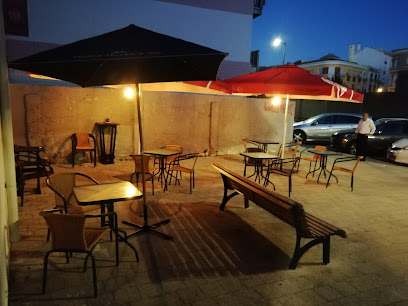
Monkey Mash
Experience the vibrant cocktail culture and innovative fusion cuisine at Monkey Mash in Lisbon, where flavors come alive in every sip and bite.
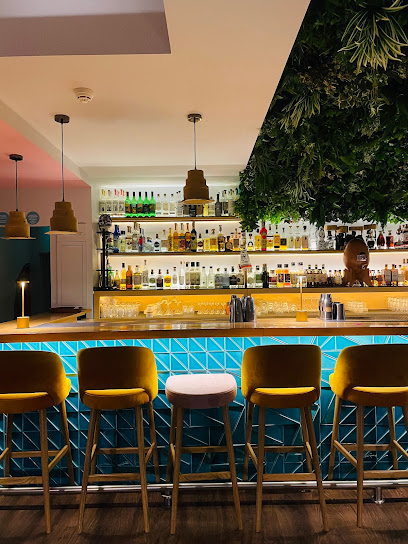
146 Bar
Discover the essence of Lisbon's nightlife at 146 Bar, where creativity meets vibrant atmosphere in every cocktail.
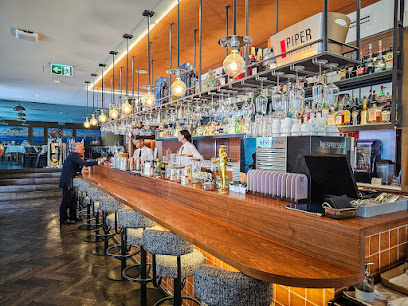
Groove Bar
Dive into the lively atmosphere of Groove Bar, Lisbon's cocktail haven where music and creativity come together for an unforgettable nightlife experience.
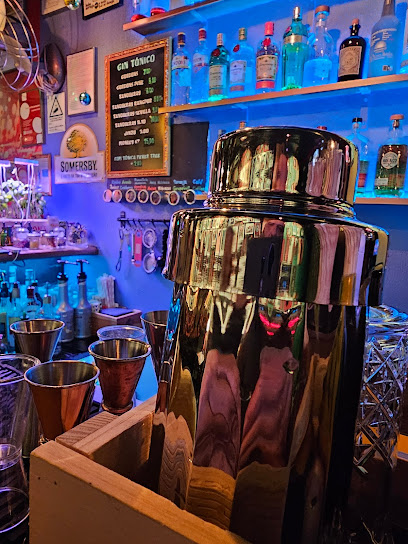
Maria Caxuxa
Discover the vibrant nightlife of Lisbon at Maria Caxuxa, where handcrafted cocktails and a lively atmosphere await.
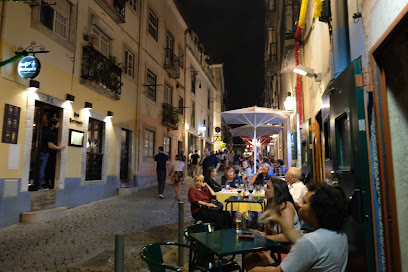
Local Phrases about Lisbon Coast
-
- HelloOlá
[oh-lah] - GoodbyeAdeus
[ah-deh-oosh] - YesSim
[seem] - NoNão
[now] - Please/You're welcomePor favor/De nada
[por fah-vohr/deh nah-dah] - Thank youObrigado
[oh-bree-gah-doo] - Excuse me/SorryCom licença/Desculpe
[kohm lee-sen-sah/deh-skool-peh] - How are you?Como está?
[koh-moh ehs-tah] - Fine. And you?Bem. E você?
[behn/eh voh-seh] - Do you speak English?Fala inglês?
[fah-lah een-glehz] - I don't understandNão entendo
[now ehn-tehn-doo]
- HelloOlá
-
- I'd like to see the menu, pleaseGostaria de ver o menu, por favor
[goh-stah-ree-ah deh vehr ooh meh-noo/por fah-vohr] - I don't eat meatNão como carne
[now koh-moh kahr-neh] - Cheers!Saúde!
[sah-oo-deh] - I would like to pay, pleaseGostaria de pagar, por favor
[goh-stah-ree-ah deh pah-gahr/por fah-vohr]
- I'd like to see the menu, pleaseGostaria de ver o menu, por favor
-
- Help!Socorro!
[soh-koh-roo] - Go away!Vai embora!
[vah-ee ehm-boh-rah] - Call the Police!Chame a Polícia!
[shah-meh ah poh-lee-see-ah] - Call a doctor!Chame um médico!
[shah-meh oong meh-dee-koo] - I'm lostEstou perdido
[eh-stoh pehr-dee-doo] - I'm illEstou doente
[eh-stoh doo-ehn-teh]
- Help!Socorro!
-
- I'd like to buy...Gostaria de comprar...
[goh-stah-ree-ah deh kohm-prahr] - I'm just lookingEstou só a ver
[eh-stoh soh ah vehr] - How much is it?Quanto custa?
[kwahn-too koosh-tah] - That's too expensiveIsso é muito caro
[ee-soh eh moo-ee-toh kah-roo] - Can you lower the price?Pode baixar o preço?
[poh-deh bahy-shahr ooh preh-soh]
- I'd like to buy...Gostaria de comprar...
-
- What time is it?Que horas são?
[keh oh-rah shoun] - It's one o'clockÉ uma hora
[eh oo-mah oh-rah] - Half past (10)Meia hora (dez)
[may-ah oh-rah (dehz)] - MorningManhã
[mahn-yah] - AfternoonTarde
[tahr-deh] - EveningNoite
[noy-teh] - YesterdayOntem
[ohn-tehm] - TodayHoje
[oh-zheh] - TomorrowAmanhã
[ah-mahn-yah] - 1Um
[oom] - 2Dois
[doh-ees] - 3Três
[trehs] - 4Quatro
[kwah-troh] - 5Cinco
[seen-koh] - 6Seis
[saysh] - 7Sete
[seh-teh] - 8Oito
[oy-toh] - 9Nove
[noh-veh] - 10Dez
[dehz]
- What time is it?Que horas são?
-
- Where's a/the...?Onde fica o/a...?
[ohn-deh fee-kah oo/ah] - What's the address?Qual é o endereço?
[kwahl eh oo ehn-deh-reh-soh] - Can you show me (on the map)?Pode mostrar-me (no mapa)?
[poh-deh moh-strahr-meh/noo mah-pah] - When's the next (bus)?Quando é o próximo (autocarro)?
[kwahn-doo eh oo proh-ksee-moh/ow-toh-kah-roo] - A ticket (to ....)Um bilhete (para ....)
[oom beel-yeteh/pah-rah]
- Where's a/the...?Onde fica o/a...?
History of Lisbon Coast
-
The Lisbon Coast holds a pivotal place in the Age of Discoveries, an era spanning from the 15th to the 17th centuries. It was from the shores of Lisbon that explorers like Vasco da Gama set sail, opening new maritime routes to India, Africa, and the Americas. The Monument to the Discoveries in Belém commemorates these intrepid navigators and the global impact of their voyages.
-
On November 1, 1755, one of the most devastating earthquakes in European history struck Lisbon. The quake, followed by a tsunami and fires, destroyed much of the city. The Marquis of Pombal led the reconstruction efforts, implementing modern urban planning techniques. The Pombaline Lower Town (Baixa Pombalina) stands as a testament to this innovative rebuilding process.
-
Commissioned by King Manuel I in 1515, the Tower of Belém is an iconic symbol of Portugal's maritime heritage. Originally built as a fortress to protect the entrance to Lisbon's harbor, the tower exemplifies the Manueline architectural style, characterized by ornate maritime motifs. It has been designated a UNESCO World Heritage Site.
-
On April 25, 1974, the Carnation Revolution brought an end to nearly five decades of dictatorship in Portugal. The revolution began in Lisbon, with soldiers placing carnations in their rifles as a symbol of peaceful resistance. This bloodless coup led to the establishment of a democratic government and significant social and political reforms.
-
Located in the Jerónimos Monastery, the Maritime Museum in Lisbon celebrates Portugal's rich seafaring history. The museum's extensive collection includes ship models, navigational instruments, and maps that highlight the nation's maritime exploits. The Jerónimos Monastery itself is a UNESCO World Heritage Site, showcasing the grandeur of Manueline architecture.
-
Fado, a genre of Portuguese music characterized by its melancholic and soulful tunes, has deep roots in Lisbon. Originating in the early 19th century, Fado reflects the themes of longing, love, and loss. Alfama and Mouraria, two of Lisbon's oldest neighborhoods, are renowned for their traditional Fado houses where this poignant music can be experienced firsthand.
-
Tram 28 is more than just a mode of transportation; it is a moving monument to Lisbon's history. Running through the narrow, winding streets of the city's historic districts, this iconic yellow tram offers a unique way to explore landmarks like the Sé Cathedral, the São Jorge Castle, and the picturesque Alfama neighborhood.
-
The culinary traditions of the Lisbon Coast are rich and diverse, reflecting centuries of cultural influences. Fresh seafood, particularly dishes like bacalhau (salted cod) and sardines, are staples. The region is also known for its pastries, such as the famous Pastéis de Belém, which have been made according to a secret recipe since the 19th century.
Lisbon Coast Essentials
-
The Lisbon Coast is easily accessible by air, land, and sea. The main airport serving the area is Lisbon Humberto Delgado Airport (LIS), located about 7 kilometers from the city center. Direct flights to Lisbon are available from major cities around the world. For those traveling by train, the main railway station is Santa Apolónia, which offers connections to various parts of Portugal and Europe. If you prefer driving, the A1 and A2 highways connect Lisbon to the rest of Portugal. Additionally, Lisbon has a major port that welcomes cruise ships, making it accessible by sea.
-
Getting around the Lisbon Coast is convenient with several transportation options. The public transportation system includes buses, trams, and the metro, all operated by Carris and Metro Lisboa. Lisbon’s iconic trams, especially Tram 28, are a popular way to explore the city. Taxis and ride-sharing services like Uber are also readily available. For those who prefer more flexibility, car rentals are a good option, and bicycles are popular for short distances and parks. The region is also well-connected by trains, making it easy to visit coastal towns like Cascais and Estoril.
-
The official currency in Portugal is the Euro (EUR). Credit and debit cards are widely accepted in hotels, restaurants, and shops. However, it's advisable to carry some cash for smaller establishments, markets, and public transportation. ATMs are plentiful throughout Lisbon and the coastal towns. Contactless payment methods like Apple Pay and Google Wallet are increasingly accepted, but it’s always good to check in advance.
-
The Lisbon Coast is generally safe for tourists, but it's important to take standard precautions. Pickpocketing can occur, particularly in crowded areas like public transportation, popular tourist sites, and busy streets such as Rua Augusta and Bairro Alto. Avoid walking alone at night in poorly lit or unfamiliar areas. Keep your belongings secure and be cautious of your surroundings. Emergency numbers are 112 for police, medical, and fire services.
-
In case of emergency, dial 112 for immediate assistance from police, medical, or fire services. Most locals speak some English, especially in tourist areas, so communication should not be a major issue. Lisbon has several hospitals and clinics, including Hospital de Santa Maria and CUF Infante Santo Hospital. Pharmacies are widely available and can provide over-the-counter medications and advice. It is recommended to have travel insurance that covers medical emergencies.
-
Fashion: Do dress smart casual, especially when dining out or visiting more upscale locations. Avoid wearing beachwear away from the beach. Religion: Do respect religious customs. When visiting churches, dress modestly and be quiet. Public Transport: Do validate your ticket before boarding. Don’t eat or drink on public transport. Greetings: Do greet people with a handshake or a kiss on both cheeks. Eating & Drinking: Do try local delicacies like pastéis de nata and bacalhau. Don’t rush meals; dining is a leisurely experience.
-
To experience the Lisbon Coast like a local, consider visiting the Time Out Market for a variety of local foods and drinks. Try exploring the lesser-known neighborhoods like Graça and São Vicente for authentic experiences. Attend a Fado performance to immerse yourself in traditional Portuguese music. Take a day trip to Sintra, a UNESCO World Heritage Site, known for its stunning palaces and gardens. Use the Viva Viagem card for convenient travel on public transport. Lastly, enjoy a sunset at one of the many miradouros (viewpoints) for breathtaking views of the city and coast.
Trending Landmarks in Lisbon Coast
-
Belém Tower
-
Padrão dos Descobrimentos
-
Miradouro de Santa Luzia
-
Carmo Convent
-
National Pantheon
-
Monument Deads of Great War
-
Monument to the Overseas Combatants
-
Fonte Sul do Rossio
-
Fonte Norte do Rossio
-
Arch São Bento
-
Chafariz do Largo do Mastro
-
Túmulo Pedro de Sousa Holstein
-
Mural for Pessoa and Saramago
-
Oldest house in Lisbon
-
Primeira Pedra
Nearby Cities to Lisbon Coast
-
Things To Do in Cascais
-
Things To Do in Lisbon
-
Things To Do in Setúbal
-
Things To Do in Caldas da Rainha
-
Things To Do in Viseu
-
Things To Do in Tomar
-
Things To Do in Évora
-
Things To Do in Coimbra
-
Things To Do in Aveiro
-
Things To Do in Badajoz
-
Things To Do in Faro
-
Things To Do in Porto
-
Things To Do in Huelva
-
Things To Do in Lamego
-
Things To Do in Guimarães













